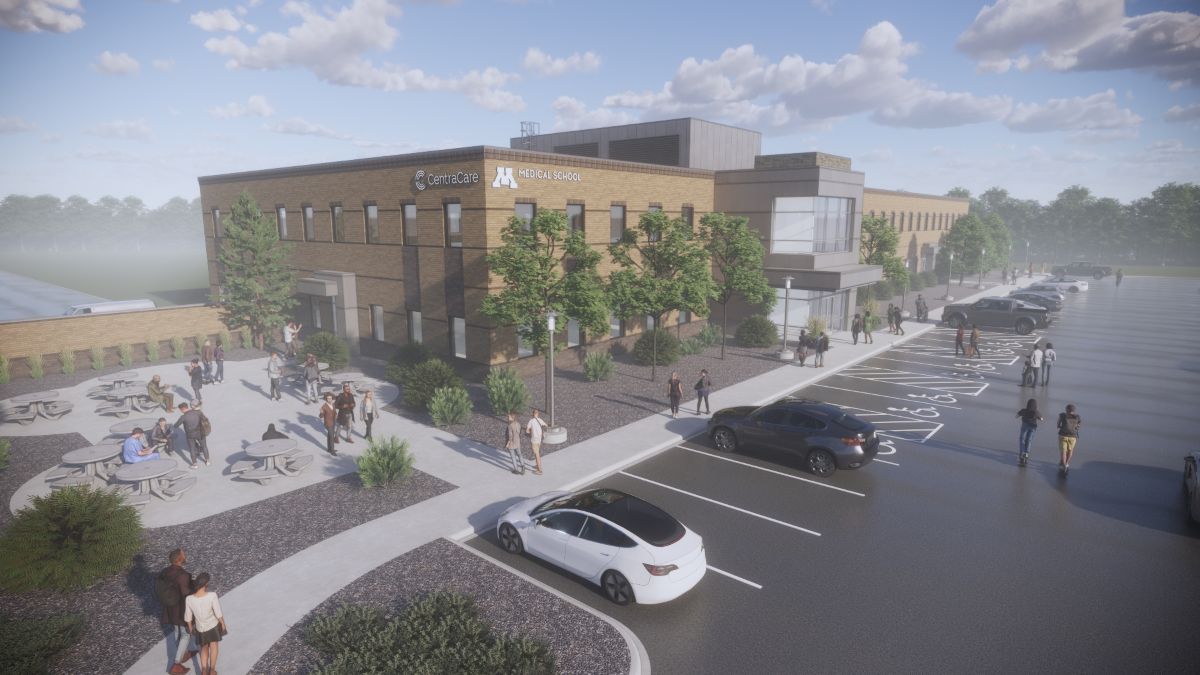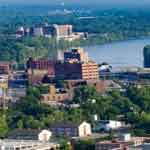CentraCare Regional Campus St. Cloud Welcomes 24 Inaugural Students in Fall 2025

28 Mar 2025
Local News
St. Cloud is prepared to meet the healthcare needs of residents across the region with a new medical school opening this fall. CentraCare Regional Campus St. Cloud is the first expansion from the University of Minnesota Medical School in more than 50 years. The school will accept 24 students per year and will operate at its maximum capacity of 96 students in 2028.
“It’s the most exciting project that I’ve ever been involved in,” says Dr. Jill Amsberry, Assistant Dean at the CentraCare Regional Campus. “I’m thrilled for our local community to meet this first class of students. I think people will be impressed by the richness of what they bring to our campus.”
This medical school will be invaluable for preparing doctors to support rural communities and elevate healthcare in the St. Cloud region. Learn why the new program will have such an impact.
Medical School is Now Possible for Local Students
The CentraCare Regional Campus St. Cloud is already changing lives in the region. Dr. Amsberry has the honor of calling applicants if they have been accepted to the program. She says tears are common when she calls future students because their dream of attending medical school is coming true.
“Getting into medical school is an extraordinary accomplishment,” says Dr. Amsberry. “The students coming to our campus all have ties to this area and have expressed a desire to serve rural Minnesota.”
Dr. Amsberry says many students wanted to go to medical school but didn’t think they would have a chance. Some are caretakers of family members while others work on family farms and moving to Minneapolis or another region to study isn’t an option. This campus gives those students that opportunity that was not previously available.
CentraCare Plans to Expand Its Residency Program
CentraCare is already planning for what will happen when this first group of medical students graduates. They don’t want students to complete their education and then leave for residency programs (the next step in becoming a doctor) in other states. This means CentraCare needs strong residency programs in St. Cloud.
“Our vision is to create training opportunities for students to have their residency in outstate Minnesota,” says Mike Blair, Senior Vice President of Academic Affairs and Chief Financial Officer at CentraCare. “We currently have 18 residents, but we need to expand our programs so graduates can stay. It doesn’t help the region if we lose students after they graduate from medical school.”
This is particularly important for the rural counties surrounding St. Cloud. While 20% of the American population lives in rural areas, only 11% of physicians practice there and only 4% of incoming medical students come from rural areas. Retaining doctors is also important for St. Cloud. The median age of rural Minnesota physicians is 59 and 33% plan to leave the profession within five years. St. Cloud needs the next generation of doctors ready to practice.
The New Medical School Will Improve Healthcare for the St. Cloud Community
There are several reasons why the citizens of St. Cloud should be excited about this medical school. First, students are learning the latest information and modern best practices for medical care. They can apply this once they start meeting with patients and share what they learned with older physicians.
The current physicians in St. Cloud are also eager to welcome students. They are excited to teach and brush up on their instruction skills.
“You never really know a topic until you have to explain it to somebody,” says Blair. “Our physicians will have to explain what they are doing and why whenever they are working with students.”
Dr. Amsberry says her work has benefitted from working with medical students. “When students are with me, they see things that I might not see,” she explains. “They remember things that I might have forgotten. They also have the most up-to-date knowledge on delivering high-quality healthcare. This allows us to have better healthcare outcomes.”
Patient care in St. Cloud will only improve with new minds and eager learners entering the medical field.
The Medical School Will Directly Benefit St. Cloud’s Economy
The CentraCare Regional Campus St. Cloud is already benefiting the local economy. Blair says that one physician in a community adds $1.5 million in economic activity. This is because they hire staff, work with local vendors, and increase healthcare access in the region.
The presence of a medical school will attract other physicians who are passionate about teaching. This means residents can enjoy access to more specialized care options instead of traveling to Minneapolis. People also rarely move alone. A new physician to the region will bring their spouse and kids, further enhancing the St. Cloud community.
Employers outside of the medical field will benefit from a community with good healthcare. When they consider moving to a region, people often ask about schools and healthcare. St. Cloud already has good K-12 schools and can now boast about its healthcare investments. This will attract a diverse workforce with valuable skill sets.
Learn More About Healthcare Access in St. Cloud
St. Cloud is proud to have two strong healthcare providers in the region. Along with CentraCare, the St. Cloud VA Medical Center offers preventative care and treatment plans to patients. As more people move to the region, both of these healthcare institutions are rising up to meet the growing needs of residents. Not only are they prepared to handle increased patient loads, but they are improving the quality of care to drive better outcomes. The result will be a healthier St. Cloud with exceptional access to medical treatment.
The City of St. Cloud Economic Development Authority is excited to welcome the first class of medical students to the CentraCare Regional Campus. The whole community will cheer you on throughout the learning and residency process.
More Topics










